With regard to the design of the home theater audiovisual space, how to control the acoustic characteristics of the room to a desired level is a very complicated project. To this end, we have conducted a detailed and comprehensive discussion on the two important aspects of room size and proportion, and reverberation time control. The size and proportion of the room are the places that must be paid attention to in the early stage of building an excellent home theater audio-visual space. The size and proportion of the room can avoid peaks and valleys in the low-frequency response of the sound, which is the main cause of the imbalance of sound uniformity in the entire frequency band, serious sounding, and affecting the clarity and detail of the sound. Reverberation time is the first acoustic parameter in the history of architectural acoustics that can be controlled by mathematical quantification. In home theater, the reverberation time should be controlled between 0.3 and 0.6 s. Otherwise, too short reverberation time will make the sound dry, not loud and full; on the contrary, too long reverberation time will make the sound ambiguous, not real and natural.
In this issue, we will focus on the very important sound insulation control, through various means to isolate the influence of external sound, reduce the noise floor of the room, to obtain more rich sound details and levels, in addition Also avoid the impact of sound on neighbors' work and rest. Many audio and video enthusiasts attach great importance to the sound insulation of the room, but do not know where to start. Below, we will conduct in-depth analysis through the key parts of the room sound, so that more audio and video enthusiasts can learn how to effectively achieve the sound insulation control of the room. Welcome to Home Theater Network Shopping Guide
Sound insulation control is a complex acoustic treatment
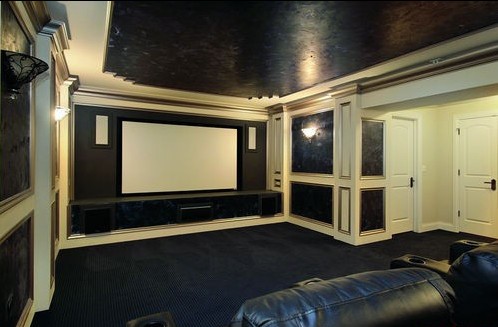
Good sound absorbing materials are not good sound insulation materials. Sound insulation materials are not good.
The so-called sound insulation control, as the name suggests, is to isolate all the sound effects of the outside world, while also placing the sound in the audio-visual room to influence others and keep the privacy of the room sound. Sound insulation control is a very complex method of acoustic processing, not as simple as one might think. For example, many audio and video enthusiasts may think that good sound absorbing materials will be good sound insulation materials. In fact, sound insulation and sound absorption are two very close acoustic treatment methods, but they are two completely different concepts. Sometimes some outstanding sound absorption materials have general or even poor sound insulation performance. This is mainly due to the difference in principle between sound insulation control and sound absorption control. To do this, let's take a look at the relevant building acoustics and then discuss how to control it.
Two different ways in which outside sounds enter the room: air sound and impact sound 
Sound insulation control actually reduces unnecessary sound in the room and isolates all sounds from the outside world.
The sound insulation control consists of two parts, one is to reduce the unnecessary sound in the room, and the other is to isolate the outside world. There are three main forms of external sound entering the indoor audio-visual space: 1. direct access through the hole; 2. sound waves hit the wall to cause the wall vibration to radiate sound to the opposite side; 3. the object hits the ground or the wall produces structural vibration and radiates sound . The first two methods can be summarized as air sound transmission, and the latter belongs to impact sound transmission. For the home theater audio-visual space, the airborne sound that enters the audio-visual room directly through the hole is the most important way for noise to enter the room. We must use the necessary means to prevent this from happening. For the sound directly struck by the outside of the building structure of the audio-visual room, it can be solved by laying an elastic surface layer on the floor. Welcome to China Home Theater Network!
Transmission coefficient, sound insulation amount TL, sound transmission level STC and weighted sound insulation amount Rw
Among the acoustic knowledge related to sound insulation control, the transmission coefficient, the sound transmission loss TL and the sound transmission level STC are the three most basic parameters. The sound transmission coefficient is the ratio of the acoustic energy of the transmitted material to the incident acoustic energy. The ideal range is between 0 and 1, which is the same as the sound absorption coefficient. However, unlike the sound absorption coefficient, in fact, the extreme value 1 is possible because the transmission coefficient of 1 means that all the sound energy is transmitted from the material, taking the family room as an example, when opening the door, the sound There is no obstacle in the path of transmission. Relatively speaking, another extreme value of 0 is an impossible parameter. After all, no matter how close the sound insulation is, there will always be some sound passing through the wall, even if the sound is too small to be heard by the human ear.
Very special, the transmission coefficient is not a commonly used parameter to measure the sound insulation performance of sound insulation materials, which is very different from the sound absorption process. The main sound insulation index is based on the decibel level of the transmission coefficient, that is, the sound insulation amount, also known as the sound transmission loss TL. Mathematically, the amount of sound insulation refers to the logarithm of the inverse of the transmission coefficient at base 10, in dB. In fact, the amount of sound insulation can be defined as the amount of sound attenuation through the wall of the sound source and the listener, but the sound absorption characteristics of the room need to be considered here. However, the sound insulation (transmission loss TL) listed by many manufacturers' sound insulation products is measured under laboratory conditions, and does not take into account the effect of actual room sound absorption on sound insulation. [page]
Sound insulation (TL) and sound transmission level STC values ​​of common partition members 
When the transmission coefficient is 1, the sound insulation is 0 dB, that is, the sound can pass freely without any blockage. According to the actual situation, the actual amount of sound insulation is actually limited to 70dB. The same as the sound absorption coefficient, the sound insulation amount also changes with the frequency change. Taking the common solid wooden door as an example, the sound insulation amount increases with the increase of the frequency. The sound insulation can also be used to evaluate the entire sound insulation spectrum with a single indicator, that is, the sound transmission level STC, and the unit is also dB. The sound level is generated by the American Society for Testing and Materials in accordance with professional acoustic standards, comparing the frequency characteristic curve of the sound transmission with its determined standard curve. Similar to the noise reduction coefficient NRC, the sound level is in the human language frequency range of about 500-2000 Hz, but if the sound insulation performance of this frequency range is to be considered, the sound loss value of the relevant frequency must be considered, for example, at the low frequency. The range of 125 to 300 Hz of the contact in response. 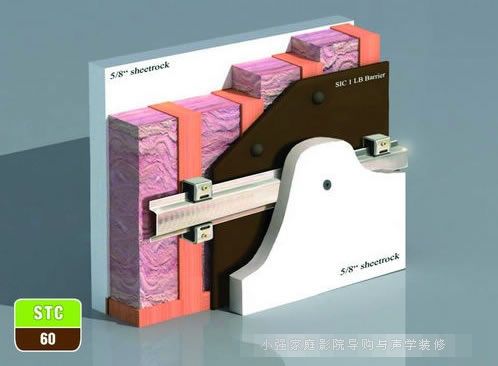
STC is a commonly used sound insulation measurement unit for sound insulation components abroad, and has a very important guiding significance.
The following is the relationship between the sound level STC and the acoustic performance of the atrial septum.
STC range / dB room sound insulation performance
0~20 Room sound insulation performance is poor, can hear the outside world
20~40 audible sound under low background noise
40~55 need to improve the sound to hear under low background noise
55~65 The sound with high sound pressure level can be heard under low background noise.
70 room sound insulation performance is excellent, basically isolated from the outside world
In addition to the sound level STC value, the measure of the amount of sound insulation of the material can also be expressed by the weighted sound insulation amount Rw. The weighted sound insulation Rw is also a single indicator based on the fact that the wall material has different sound insulation at different frequencies (the high frequency sound insulation is better than the low frequency under normal conditions). The weighted sound insulation is obtained by comparing the standard evaluation curve with the frequency characteristic curve of the wall sound insulation. The standard evaluation curve considers the low-insensitive auditory characteristics of the human ear, but the weight of the sound insulation is considered compared with the sound level. The sound frequency ranged from 100 to 3150 Hz has been extended in both high and low frequencies. In general, for noise with a lot of low-frequency components, the amount of weighted sound insulation is generally exaggerated by 5 to 10 dB compared to the sound insulation performance of the actual material. In fact, the evaluation methods of STC and Rw are very similar, but differ in some details. In general, STC and Rw are equal, or 1 dB smaller.
Indoor acoustic environment evaluation standard: NC, NCB and RC indoor evaluation curve
The home theater audio-visual space is an indoor space. In addition to controlling all external noise interference, the control of noise requires strict control of indoor noise, including noise emitted by air-conditioning and HVAC systems and AV equipment. The standards in this regard are mainly developed by the American National Standards Organization and the American Society of Heating, Ventilating and Air-Conditioning Engineers, including the NC noise evaluation curve, NCB and RC indoor evaluation curves. 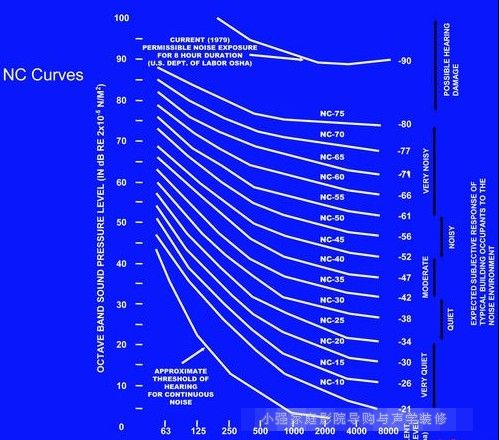
NC noise evaluation curve
Among the three evaluation curves, I believe that many senior home theater players know the NC noise evaluation curve. It is the earliest evaluation method for evaluating the quality of indoor acoustic environment. It was proposed by acoustic expert Bairinak in the 1950s. . The NC noise evaluation curve is actually a curve group, which is a curve group composed of a set of connection curves of octave sound pressure levels at each center frequency of the octave of 63 to 8000 Hz. Among them, NC10~15 stands for very quiet, NC20~25 stands for quiet, NC30~40 stands for quieter, etc. For home theater audio-visual space, the curve below NC25 is generally better. In the concert hall environment where the background noise is more demanding, even the strict standards below NC15 are required. In fact, it is not a simple matter to control the background noise in the room well. Most of the home theater audio-visual environment without sound control is usually above the NC30. Therefore, users can only get more sound details by increasing the sound pressure, but this is not the best method, really good. The solution is to optimize the background noise in the room. Welcome to China Home Theater Network!
The NCB indoor noise evaluation curve is a modified version of the NC noise evaluation curve, except that its low frequency extends to the 31.5 Hz and 63 Hz octave bands. The modified NCB method takes into account the low frequency noise generated by the heating, ventilation and air conditioning systems, which means that there is a higher requirement for low frequency background noise. The RC curve is mainly used by the builder's specifications, and its sound pressure level below the 500 Hz octave is much lower than the NCB curve.
Quality law of sound insulation control
The law of mass is a key point that we must consider when making sound insulation control. The so-called mass law means that the heavier the surface density or the mass per unit area, the better the sound insulation effect. For a single-layer uniform dense wall, the amount of sound insulation will theoretically increase by 6 dB for each doubling of the areal density. However, 6dB is only the value under ideal conditions. In general, taking a single-layer uniform dense wall as an example, since the sound insulation performance is related to the frequency of incident sound waves, and the frequency characteristics depend on factors such as mass per unit area, stiffness, internal damping of the material, and boundary conditions of the wall, When the single-layer uniform dense wall is doubled, the measured value is smaller than 6dB, usually in the range of 3 to 5dB.
Resonant frequency of sound insulation control
Any object will have a resonant frequency, and the sound insulation performance of the sound insulation wall will also be affected by the resonant frequency. When the frequency of the sound wave is the same as the resonant frequency of the wall, the wall as a whole generates resonance, and the sound insulation amount at this frequency is greatly reduced. Generally speaking, the thicker and heavier the wall, the lower the resonance frequency. When the resonance frequency is lower than the lowest reference frequency of 100 Hz for sound insulation evaluation, it is not sensitive to low frequency sound due to the auditory characteristics of the human ear, so it is separated. The effect of sound volume is even lower. 
Sounding effect of sound insulation control
The anastomosis effect is another acoustic problem in addition to the resonance problem after the acoustic wave contacts the partition wall. Because the wall is forced to vibrate in the vertical direction, it also produces forced bending vibration along the wall. Above a certain frequency, the forced bending vibration will spontaneously coincide with the inherent free bending vibration of the wall material, so that the wall will bend with the incident sound, causing the sound energy to be projected to the other side in a large amount, forming a sound insulation amount. The trough, this phenomenon is called the anastomosis effect, and this special frequency is also called the coincidence critical frequency.
The factors that cause the anastomosis effect are more complicated, not only related to the areal density of the material, but also related to the elasticity and thickness of the material. According to the theory and practice, the critical frequency of light, thin and soft wall anastomosis will be higher, and the anastomosis effect is weaker. The critical frequency of thick, heavy and rigid wall anastomosis is low, which is easy to cause anastomosis. When the areal density is reduced within a certain range, the frequency of the anastomosis will become higher, thereby reducing the anastomosis effect and improving the sound insulation performance. 
In summary, the sound insulation control is not a problem that can be solved only by closing the doors and windows, and involves many complicated architectural acoustic problems. Various indoor acoustic environment evaluation standards in the room have established a theoretical basis for users to create a home theater audio-visual room with ultra-low background noise. Understanding the international expression of a variety of different specifications of sound insulation provides a good help for understanding the sound insulation effects of various sound insulation materials and structures. The most widely used in practical applications are the three physical foundations of material sound insulation control, including mass law, resonance frequency, and anastomotic effect. Below we will start from the building structure of the audio-visual room to discuss the sound insulation control in the ceiling, partition, doors and windows. [page]
Discussing the sound insulation control of the audio-visual room from different building structures
Above we have theoretically discussed the sound insulation problem in detail, the following will be combined with the actual application for analysis. The home theater audio-visual space is analyzed from the architectural structure, which is mainly divided into ceiling and floor, partition wall, door and window. Each part has its own sound insulation problem, but the actual processing method is to consider how to increase the sound insulation performance from the perspective of mass law, resonance frequency and matching effect. In addition, there is also control of indoor noise, as well as control of the heating and cooling equipment, projectors and amplifiers, the noise of the lighting itself, and so on, to obtain a more noise floor level.
Sound insulation control on ceiling and floor
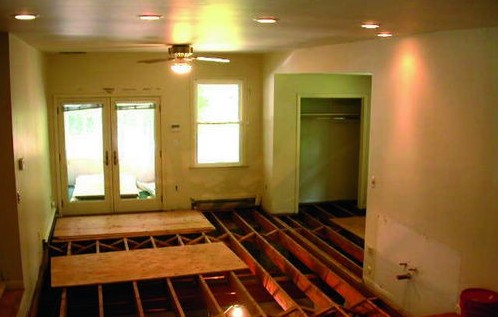
The sound insulation of ceiling and floor must pay attention to the problem of isolation between sound bridge and impact sound.
At present, almost all the ceilings built in the home audio-visual room are fixed directly on the keel, and attention should be paid to the problem of the sound bridge. The so-called acoustic bridge means that the sound passes through the keel, bringing the vibration on one side of the ceiling to the other side of the board. This way of sound propagation is very similar to the way of crossing the bridge. The more the sound bridge, the larger the contact area and the stronger the rigid connection, the more serious the sound bridge phenomenon, and the worse the sound insulation effect. 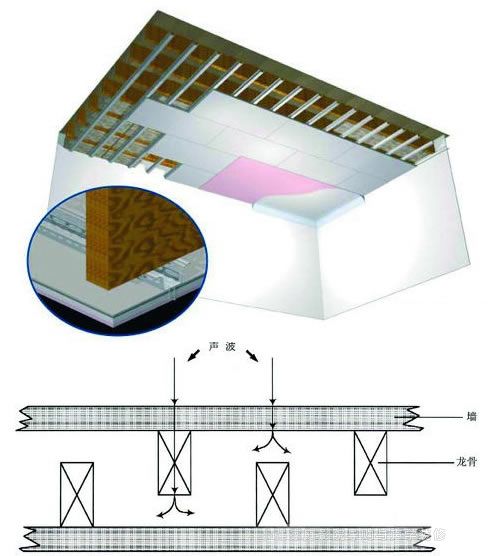
The high efficiency keel construction method is a method to effectively improve the sound insulation performance.
How to adopt a more efficient keel construction method is an effective way to improve the sound insulation effect. It is a good treatment to make the keel structure into a double-layer structure and a staggered structure. The double-layer structure is composed of the main keel and the auxiliary keel. The lower part of the main keel and the auxiliary keel is composed of a decorative surface, a bearing surface and a side surface, and the bearing surface is separated from the decorative surface, which reduces the sound bridge and improves the sound insulation effect. The staggered structure means that the vertical keels are staggered and separated, and the two sides of the plates are not fixed on one keel at the same time, and the heaven and earth keels share one set. According to the actual application, the sound insulation of the staggered keel ceiling will be increased by about 1~3dB compared with the ordinary keel ceiling, while the double keel ceiling is about 7~8dB higher. Welcome to the home theater network shopping guide network In addition, the elastic pad between the plate and the keel to form an elastic connection, such as elastic metal strips or other elastic materials, will also improve the sound insulation of the ceiling, up to 3dB about. In terms of materials, the light steel keel itself has a relatively small stiffness, and it can build a ceiling with better sound insulation than the wooden keel and the gypsum keel. In order to obtain better sound insulation performance, it should be avoided to use embedded luminaires on the ceiling, because it will produce acoustic holes in the ceiling, which seriously affects the sound insulation performance of the ceiling. 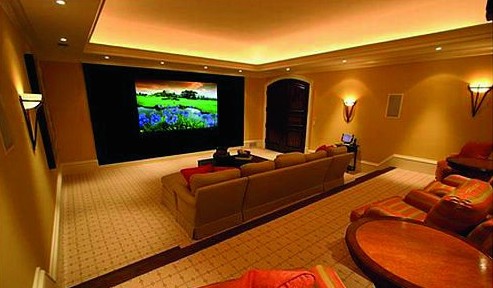
For the sound insulation control of the floor, it can be better by the separate treatment of the surface layer and the structural layer or by the elastic support. In addition, the cushion made of compacted elastic three-dimensional nylon can provide a fairly good sound insulation effect on the tile or cement cushion. The sound insulation control of the floor is mostly to reduce the noise nuisance to the downstairs users and avoid unnecessary disputes. If you are building a home theater audio-visual room in a single villa and basement, then this treatment can be done.
Sound insulation control on a single partition wall
Doors and windows are important factors influencing the sound insulation effect, but in the family environment, they are often indispensable.
In an ideal home theater viewing space, the four-sided partition is preferably a single partition with no other components, including doors and windows. But in the actual family situation, this is impossible, at least the entry and exit is essential. In addition, some users keep windows in order to preserve the home atmosphere or to obtain a unique landscape. Each of the different components on the partition wall will have different sound insulation, thus reducing the overall sound insulation effect of the partition wall. For example, a 0.5m2 window is opened on the wall of 55m with a sound insulation of 55m, and the sound insulation of the window is only 25dB, so the overall sound insulation of the partition wall is reduced to about 38dB. Therefore, we discuss the sound insulation control of a single partition wall separately from the door and window parts, and focus on the sound insulation problem of a single partition wall. 
The structure of a single partition is not simple
Regarding the sound insulation performance of a single partition wall, first of all, it is necessary to consider whether there are any cracks and holes in the partition wall, because it is similar to the window, which will greatly reduce the sound insulation of the partition wall, as long as the wall has one thousandth of a gap and a hole. Will make the comprehensive sound insulation greatly reduced by more than 10dB. This illustrates the importance of sealing the partition to avoid air gaps. This situation is particularly prone to appear on double-walled walls with a keel structure. Usually, plastic elastic strips are placed when the keel is installed around the wall. At the same time, the outer wall should be installed with a wrong seam, and the inner layer can be unchecked. Sew, only the outer layer joints, which can reduce the impact on the sound insulation of the partition wall.
After ensuring the sealing of the partition wall, it is necessary to analyze the sound insulation performance of the partition wall by combining the mass law of the sound insulating material, the resonance frequency, and the matching effect. According to the above, the sound insulation of the uniform and dense partition wall is controlled by the mass law, and the sound loss is increased by 6 dB for every doubling of the sound transmission. However, for ordinary 30cm concrete walls, it is impractical to use this method to increase the sound insulation performance of the partition wall. However, we can solve this problem through a multi-layer composite partition. 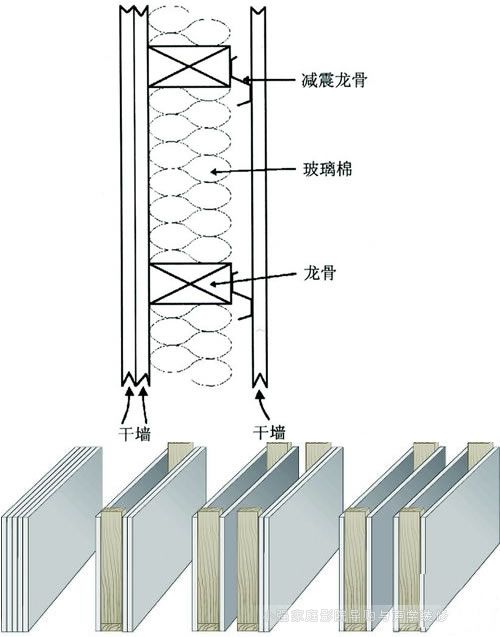
The multi-layer composite partition wall structure is a commonly used sound insulation wall structure with good sound insulation performance.
The multi-layer composite partition wall is composed of different material layers, each of which has a different density, and each sound is attenuated by different materials. This method can reduce the cost and reduce the loss of space. In addition, the addition of an air layer between the wall materials is also an effective treatment, but care must be taken to avoid rigid connections between the two materials, causing acoustic bridge problems. Because the rigid connection provides the transmission of vibration to transmit the sound to the room without loss. In the air layer, sound absorbing materials can be added to increase the sound insulation ability of the multi-layer composite partition wall. If the wooden keel is connected, the sound absorbing material will cause damping between the material plates to reduce vibration, and the sound absorbing material can be added. About 5dB; if it is a light steel keel, the coupling of the two layers has been weakened, and the amount of sound insulation obtained can be increased to about 8dB. As for what kind of sound absorbing material is inserted inside, it does not cause much change to the sound insulation performance. 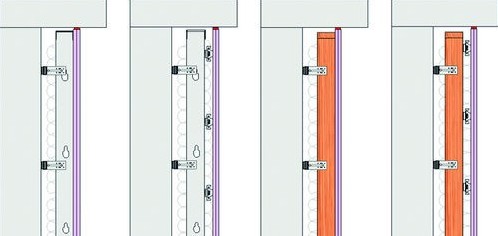
Multi-layer composite partition walls should avoid rigid connections, try to use elastic connections
In addition, for the amount of sound insulation that needs to increase the low frequency sound, the use of a multi-layer composite partition wall is also an excellent treatment method, preferably with a cavity and a staggered keel or a flexible connection between the components. The elastic connecting piece connecting the two wall materials is a molding material, and by being S-shaped, each side contacting a wall will effectively reduce the vibration energy propagating through them. If the home environment is large and there is no need to consider the space loss problem, then using very thick concrete wall panels is also a good treatment. 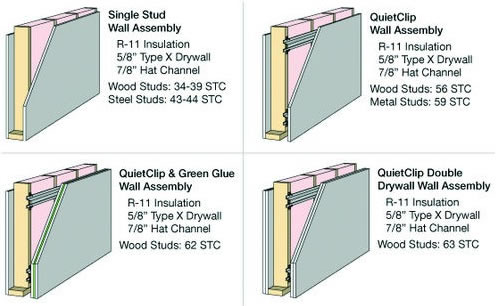
How to restrain resonance and anastomosis is a place that sound insulation walls must consider
The resonance problem is another important issue to consider. The thicker the wall, the lower the resonance frequency. For example, for different wall densities of 12mm and 15mm thickness, there are different resonance frequencies. The surface density of 12mm partition wall is 10kg/m2, and the surface density of 15mm partition wall is 12kg. /m2, then the resonance frequency of 15mm thick is basically lower than 100Hz, which has a low influence on the sound insulation performance of the partition wall. For the 12mm partition wall, it is easy to cause resonance problems near 100Hz, resulting in a sound insulation at 100, 125Hz will be much worse than the 15mm partition wall. 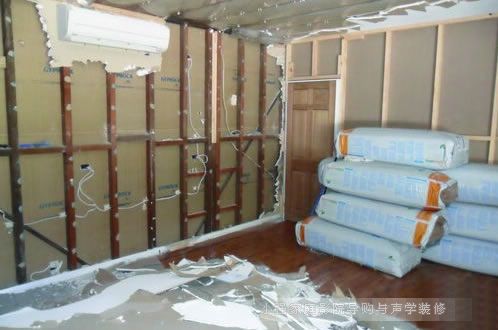
The use of multi-layer composite partitions composed of different material densities is the most effective way to solve the problem of resonance and anastomosis.
The problem of coincidence is also a link worthy of attention, especially the multi-layer composite partition wall is more likely to coincide with the single-layer partition wall. The single-layer partition wall with different thickness of gypsum material is taken as an example for illustration. The critical frequency of the 12mm and 15mm gypsum board is 3.15kHz and 2kHz respectively, so each of them also has the problem of falling sound insulation in the corresponding frequency band. It is worth noting that the sound insulation of the 15mm gypsum board at 2kHz is very serious. Even according to the mass law, it is thicker than the 12mm board, but the sound insulation at this frequency is far less than the 12mm board. The critical frequency of the double-layer identical plate overlap is basically the same as that of the single-layer plate. However, due to the vibration superposition of the double layer, the anastomosis effect will be more intense, and the resulting sound valley is deeper. However, the sound insulation of the single-layer partition wall is far from meeting the requirements of the sound insulation of the home theater audio-visual room, and the structure of the multi-layer composite partition wall is necessary. It is necessary to consider the use of plates of different thicknesses for lamination, separating the respective matching frequency bands from each other, which is more advantageous for the overall sound insulation performance. In practical applications, it can be found that a partition wall of 12mm and a 15mm board will have a higher sound insulation than a double 15mm partition, which is the result of the weakening of the anastomosis effect. Welcome to China Home Theater Network!
The higher the surface density and the thicker partition wall, the frequency of the anastomosis often appears in the range of 250-2000 Hz. The higher the weight, the deeper the anastomotic valley appears in the low frequency range of the sound insulation curve, which greatly reduces the low frequency of the partition wall. Aspects of sound insulation performance. Therefore, if there is a high requirement for low-frequency sound insulation, this problem must be paid attention to when performing sound insulation processing.
In summary, the use of multi-layer composite partitions composed of different material densities is the most effective method. It is also an effective method to add an air layer in the middle of the partition wall, but rigid contact must be avoided.
[page]
About the sound insulation control of doors and windows Since the home theater audio-visual space is part of the home environment, doors and windows usually appear in it, so the sound insulation control of the doors and windows cannot be ignored.
Doors generally used in home buildings do not use special sound insulation, and the general sound insulation performance is relatively low. The wood board made of wood board, wood splint and fiber density board generally has low weight, large door seam and poor sound insulation performance, generally between 15 and 20 dB. The steel door with the angle steel as the frame and the steel plate as the surface layer has a larger weight and better sealing performance, and the sound insulation is usually between 20 and 25 dB. There is also a more common plastic steel door, which is light in weight and has poorer metal sealing performance. The sound insulation is generally not more than 15dB. 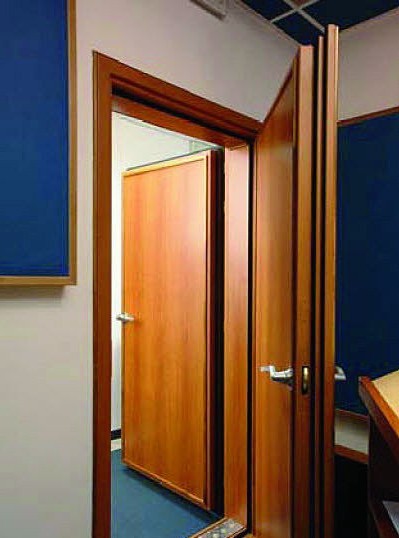
The soundproof door is an important part of the sound insulation of the entire audio-visual room. 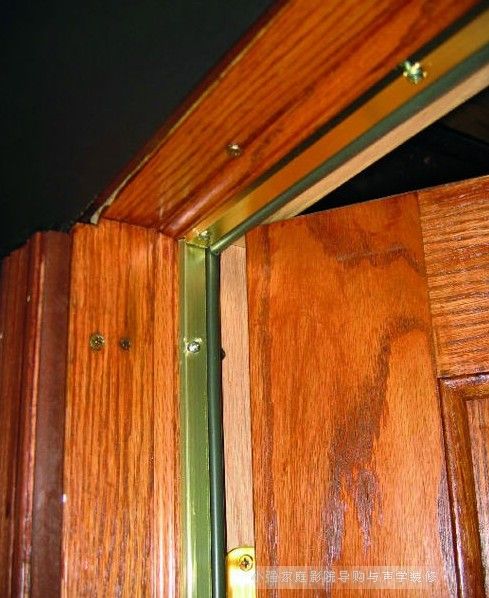
The sealing of the door seam must be handled to ensure that there are no voids left
The above three common household doors are actually inferior in sound insulation performance, and it is necessary to perform appropriate sound insulation improvement on the door. First, it is necessary to increase the weight and thickness of the door. The weight of the conventional building acoustic door is less than 50kg/m2 and the thickness is not more than 8cm. However, please do not blindly increase the weight and thickness of the door. If the weight is too large, it will be difficult to open. If the thickness is too large, it will affect the opening and the lock cannot be installed. It is recommended to use materials of different densities, such as multi-layer steel plates and MDF, and the thickness of each layer should be different to minimize the sound insulation problem of resonance and anastomosis. If there is an air layer in the door, it is recommended to fill the sound insulation material, which can effectively improve the sound insulation effect. For the treatment method of the door seam, it is mainly to seal it with a sealing strip or a sealing sponge, or to use a mechanical pressing device to turn the wrench when the door is locked, and press the pressing device against the door frame by mechanical linkage to obtain a good Sealing. If a qualified friend can even use a double-door structure to improve the sound insulation performance, if there is a certain space between the double doors, a strong sound absorbing material is installed in the space, so that a sound insulation structure with a high sound insulation can be formed, which ensures excellent performance. Sound insulation performance. 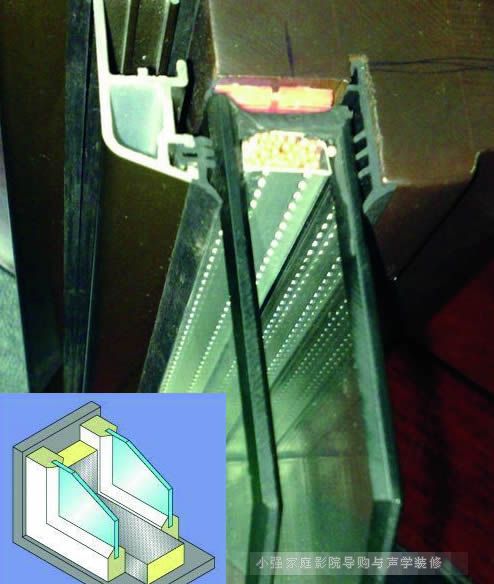
The sound insulation of the window is unique to the audio-visual space in the home environment and must be noted.
In a professional audio-visual room, the window is not allowed to appear, because it will seriously affect the overall sound insulation performance of the room. However, windows in the home environment are inevitable, and many friends are reluctant to remove windows for the audio-visual room. To do this, we must do the sound insulation of the windows. Generally speaking, the sound insulation of a single layer of 8 mm glass plate is only about 25 dB. Glass is a good sound insulation material. Even at the same thickness, the sound insulation of the glass is even larger than that of cement. Unfortunately, ultra-thick glass is rarely used in buildings. Adding an air layer to the glass is a good solution, but the narrow air layer in the middle of the ordinary hollow sound insulating glass is less than 1 cm, which not only can not effectively help the sound insulation, but the two layers of glass will be severely coupled by the sealed air. Together, the vibration is like a single-layer window that is connected together, and some frequencies will resonate, which will reduce the sound insulation performance. There is also a laminated glass, similar to the front windshield of the car, which uses a sandwich-type sandwich structure with a transparent film between the two layers of glass, so that the two parts of the glass vibrate independently and generate damping during the vibration, but actually Compared with single-layer glass of the same thickness, the improvement of sound insulation performance is not large. When the thickness of the film in the middle exceeds 5 mm, the sound insulation amount of 5-10 dB is increased. Welcome to Home Theater Network Shopping Guide
The sound insulation of double-glazed glass is more common, but it must be noted that the spacing between the two layers of glass must be at least 50mm.
If the double-glazed method is used to isolate the sound, the spacing between the two layers of glass should be at least 50mm. If the environmental conditions permit, the effect is better than 100mm. The wide air layer makes the two layers of glass vibrate independently. Increase by about 15dB. At the same time, it should be noted that when two layers of glass are used, the two layers of glass are preferably unequal thickness to reduce the sound attenuation of the specific frequency band caused by the matching effect. If one layer of glass can be tilted, let the air layer The upper and lower sides can have different air layer thicknesses, which is more conducive to preventing resonance between the two layers of glass. More importantly, the double-glazed structure can effectively enhance the low-frequency sound insulation below 250 Hz. Generally speaking, the double-layered window with good installation, tight sealing and sound-absorbing material at the peripheral position can even reach more than 45dB. Of course, if there is a higher sound insulation requirement, three layers of unequal thickness glass windows can be used. If the glass is inclined, the sound insulation of the sound insulation window can even reach an ideal 50dB or more.
Since the audio-visual room is mostly built in residential areas, sound insulation control is a very important architectural acoustic treatment method in order not to be affected by external environmental noise and not affect other people's rest and daily activities. For the overall sound insulation of the audio-visual room, it is usually required to be more than 50dB, and the sound insulation of the wall, ceiling and floor should be more than 55dB, and the doors and windows should be above 45dB. Through the above-mentioned sound insulation treatment method, basically the requirements can be met. In the actual process of processing, we must pay special attention to the resonance and anastomosis effects that are easy to ignore. We should not consider the problem only from the law of quality. Comprehensive treatment is the most ideal. [page]
Some foreign audio-visual institutions and organizations recommend sound insulation control
At present, many audio-visual institutions and organizations at home and abroad have their own unique views on sound insulation control. The following are representative of THX and PMI, two internationally renowned audio-visual companies, to tell them how they handle home theater. Sound problem.
THX's recommendation for sound insulation control from THX in the United States believes that audio-visual enthusiasts are very familiar and have a deep knowledge of home theater audio. In recent years, we have organized a number of trainings on home theater design and video tuning with THX, which has greatly promoted the standardization and specialization of the domestic audio and video industry. In terms of sound insulation control, THX said that this is a very important room acoustic processing. An audio-visual room with excellent sound insulation can not only improve every detail in the movie soundtrack, but also allow users to use audiovisuals at any time. The room, without having to worry about disturbing the rest of the neighbors during late night use, can ensure privacy. 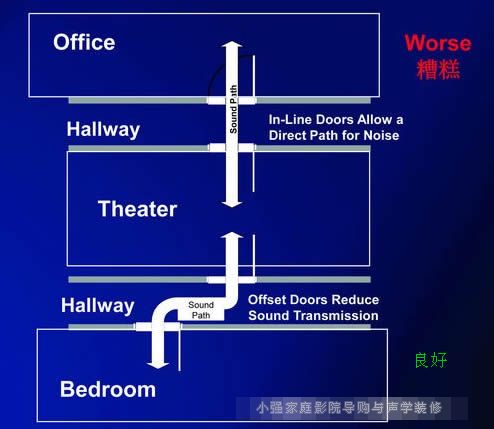
In the family environment, we must pay attention to the propagation path of the sound. 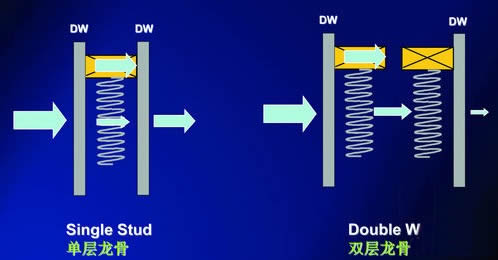
The method of isolating the acoustic bridge through the double keel is an important link.
THX believes that the source of external noise mainly includes two parts: air transmission and structural sound transmission. The air transmission mainly comes from doors, windows and sewers, while the structural sound is from the partition wall, floor and ceiling. For the sound insulation control of the audio-visual room, the way to stagger the sound transmission is an important part. Thick materials should be used on the partition wall, using strategies to reduce resonance, disconnect the bridge, and increase the vent. In the key acoustic bridge problem, the problem should be solved by elastic connection on the double-layer dragon skeleton. On the floor side, it is recommended to use a floating floor structure, while the ceiling is a suspended ceiling structure. Regarding doors and windows, THX recommends avoiding the use of windows as much as possible, even if you want to use them. Avoid the use of unnecessary doors. It is recommended to use a double-door structure to form the sound gate. Soundproof doors must be used. It is best to add a door outside the room. For door seams, a large amount of caulk is required and the seal is maintained on a regular basis.
PMI's recommendation for sound insulation control PMI is a well-known home theater design company from the United States, and THX also attaches great importance to sound insulation control. PMI believes that good sound insulation protects users' privacy, gains more sound details, and is able to use the room at any time. PMI believes that when watching action movie movies in the audio-visual room, the sound level STC of the next room is 60, which is a good sound insulation structure. If the STC reaches 75, the best result can be achieved.
The two means of sound insulation control are to reduce air leakage and mechanical sound transmission, including filling all leaks, paying attention to the sound control of doors, windows, pipes and air conditioners, through special wall structures, floating floors and overhead ceilings. To deal with the problem of mechanical sound transmission. Care should be taken to isolate the path of the transmitted sound to reduce the impact on work and rest. 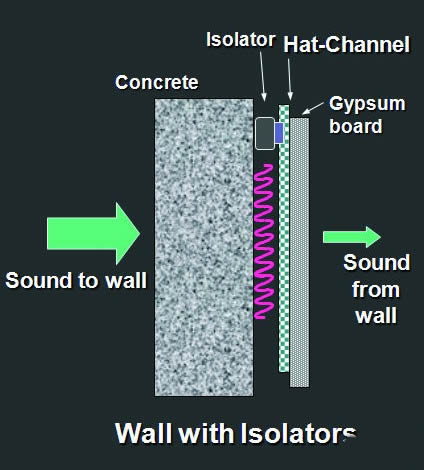
For sound insulation walls, the use of elastic damping is quite effective. 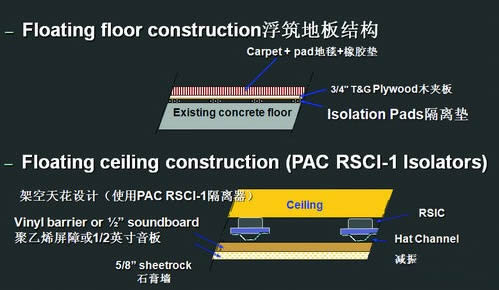
For the sound insulation of ceilings and floors, PMI recommends floating floors and overhead ceilings.
The sound insulation treatment of the partition wall is treated by a thick wall, shock absorption isolation and a built-in larger air isolation layer, and the shock isolation treatment is preferred. In terms of ceiling and ground, isolated multi-storey floor structure and overhead ceiling design are good treatments. Doors and windows are the most vulnerable. It is recommended to use specially manufactured doors and windows. It must have good sealing and good damping and damping. Of course, weight is a must.
Summary: In the special planning of the four consecutive phases, we conducted a comprehensive discussion on the room size and proportion of the home theater audio-visual space, reverberation time control and sound insulation control, among which the content of the room size and proportion is Obtained a good response and resonance of the readers, and the sound insulation problem discussed in this issue, on the surface, there are not many links involved. In fact, there are many problems to be considered. Due to limited space, this article cannot be discussed in depth. In fact, in the sound insulation problem, we must comprehensively consider the impact of various conditions to find the most appropriate treatment.
Security and protection system (SPS) security & protection system, in order to maintain social public safety, the use of security products and other related products constitutes an intrusion alarm system, video security monitoring system, access control system, BSV LCD video wall system, access control fire System, explosion-proof safety inspection system, etc.
Security mainly includes: closed-circuit monitoring system, anti-theft alarm system, building intercom system, parking plant management system, community card system, infrared perimeter alarm system, electronic fence, patrol system, attendance access control system, security room system, electronic examination room system , smart door locks, and more.
As technology continues to advance, the security industry continues to expand. Specialized services such as alarm operation, intermediary, and information began to take off; the product range has been continuously enriched, and it has developed into dozens of categories, such as video surveillance, entrance and exit control, intrusion alarm, explosion-proof security, and thousands of varieties; closed-circuit monitoring is developing rapidly.
Security Pcb,Security System Circuit Board ,Security Pcb Circuit Board,Security Printed Circuit Board
Chuangying Electronics Co.,Ltd , https://www.cwpcb.com